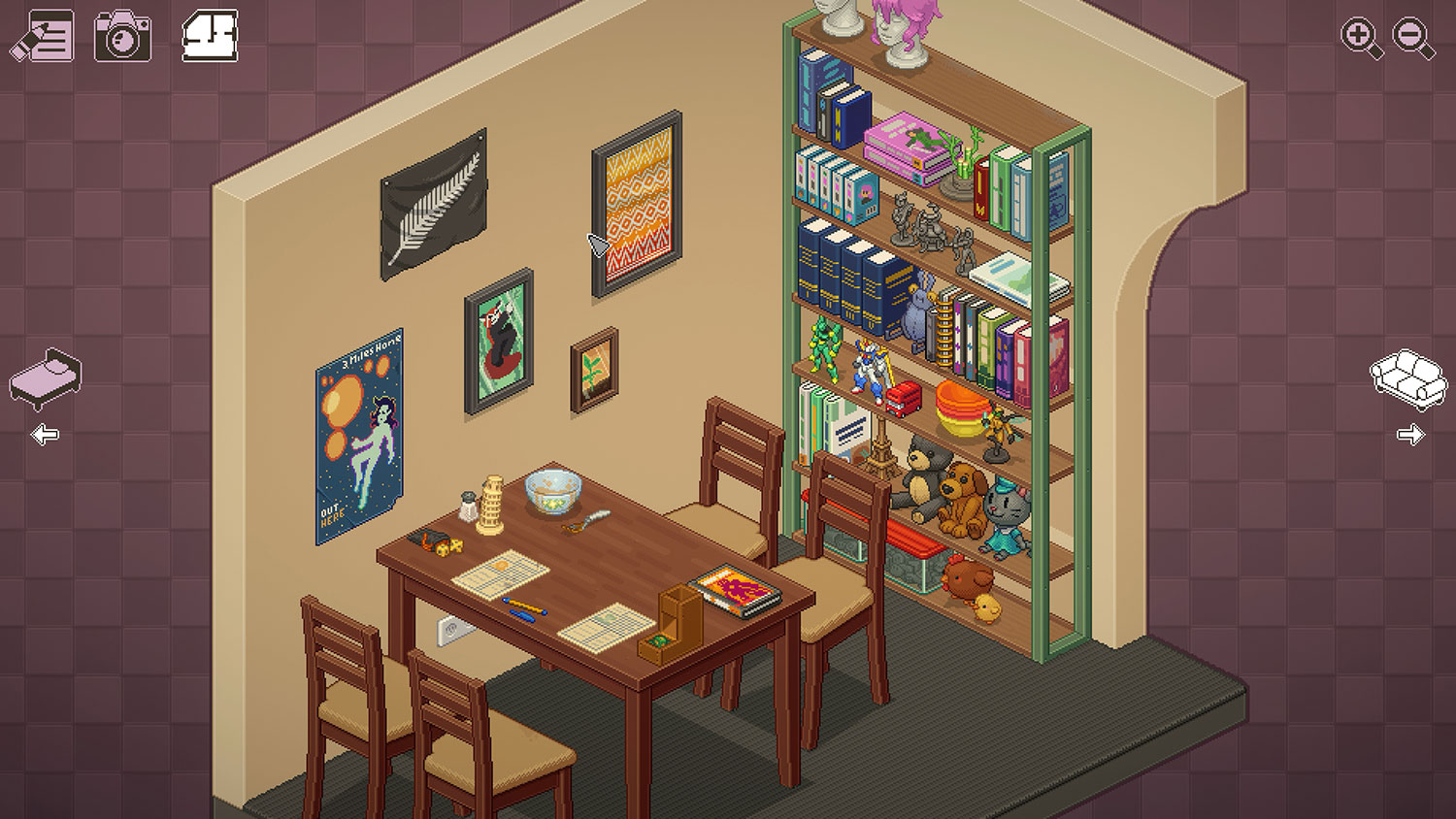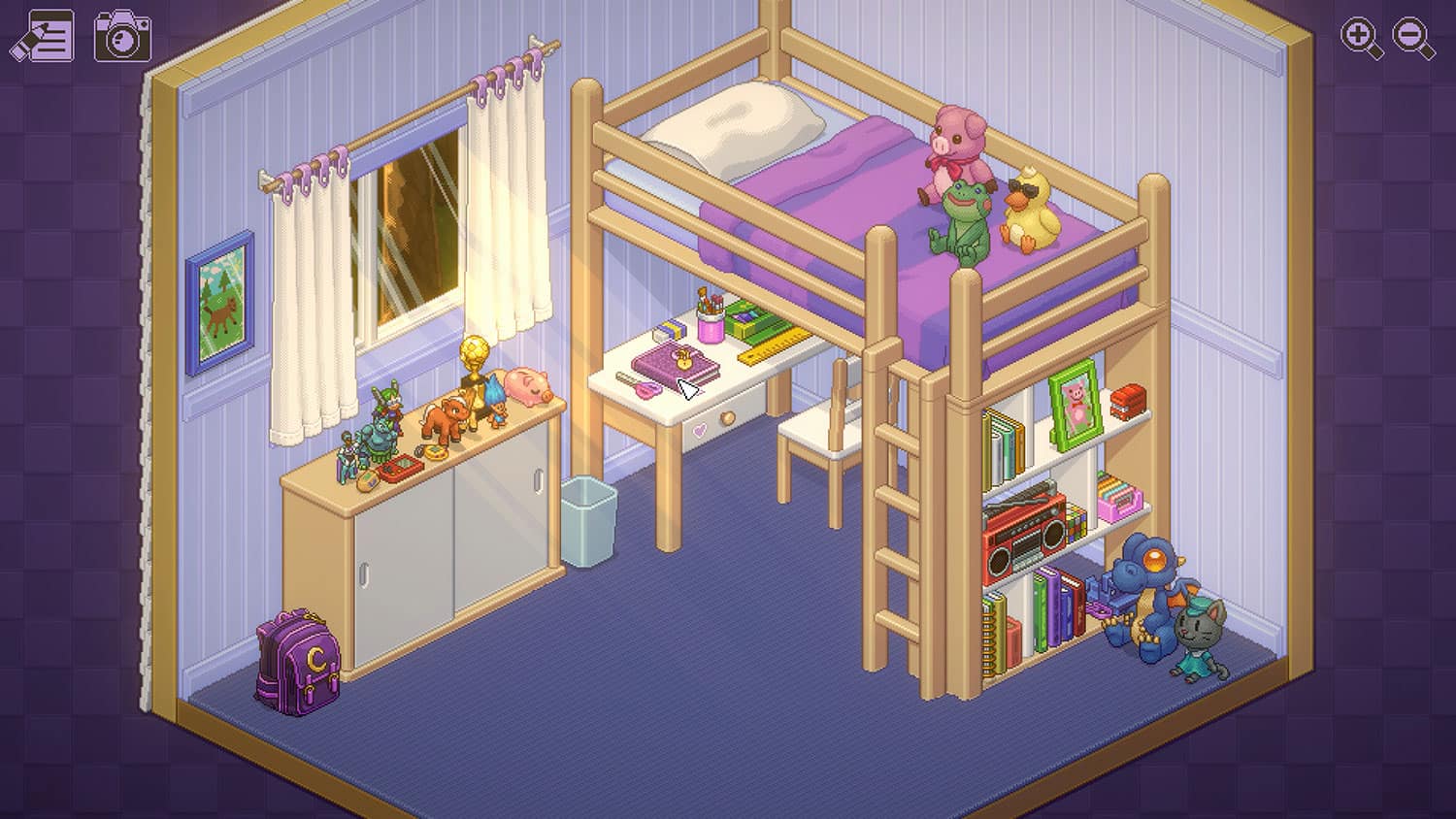After two and a half years of avoiding COVID, I finally succumbed to it after a night out with friends. My brain was fried, I was exhausted, and I was trapped in my bedroom for seven days of isolation.
I put out the call on Twitter for gentle game recommendations. A couple of friends suggested the game Unpacking, so I decided to check it out.
Unpacking is a gentle puzzle solving game, but it is also a beautiful example of environmental storytelling from Witch Beam Games, a Brisbane based indie game studio. I wanted to talk about it this week, because there’s a lot game designers can learn from this short and sweet game.
On a surface level, the premise of Unpacking is simple. Unpack the boxes in various rooms at different stages of the player’s life. This means putting away stuffed toys, books, and countless pairs of socks. I’m glad I’m not the only one with a sock problem. These are light puzzles that occasionally need some manoeuvring to figure out where to put what.
Yet under the surface, in unpacking these objects, you uncover a story. It’s about a young woman finding herself as she navigates the early years of her life through the places she lives in.

A masterclass in environmental storytelling
Where Unpacking shines is in environmental storytelling. It could have been a simple game about pulling things out of boxes, and yet, these objects tell the story of a life.
This could be the dreidel in the bedroom, or the rice cooker, soy sauce, fish sauce, and sesame oil in the kitchen. It’s also about where you place the objects, some of which need to be placed in a certain location to progress the game. And in forcing you to put certain objects in specific places, the game is emphasising the value of those objects, and how that value changes over time.

As a player, you become attached to the objects that crop up through the game – the soft toys which follow her from childhood and slowly become more worn through the game. The cups which start out new and become chipped. The growing collection of stuffed chickens! (Who doesn’t have a ‘thing’ they collect?). The story is told through these objects, and paying attention to them rewards the astute gamer.
One of the things I appreciated here was the presence of sanitary products such as tampons and pads in the bathrooms. As a female gamer, I don’t think I’ve ever played a game that’s actually included these vital items in the gameplay. I’m so used to mainstream games forgetting things as important as bras on female characters, and here they are! It might seem like a small thing, but it made me feel connected to the main character of Unpacking’s story.
There’s a level of verisimilitude here in the objects in the house, especially for Australians; the overload of magnets on the fridge, the knick-knacks from travel adventures, and the expression of multiculturalism and religion in the objects themselves. It’s worth highlighting the way these objects interact with the environment. I really appreciated how swiftly the objects fit into their places; there were no janky controls, which meant a smooth gameplay experience. Pictures hang on walls, books slot into shelves, and cups stack into each other. It’s something that could easily be overlooked, but I wanted to draw attention to it because the way the world interacts is quite well done.

Mild spoilers ahead!
Of particular note is the level where our protagonist moves in with her first boyfriend, and nothing quite fits. I really appreciated the storytelling here; the way you have to make room for your stuff, and he’s got his undies spread out over three drawers. Particularly heart-breaking is being unable to find a place for your hard earned University degree. That was a beautiful touch, and also harks to a common experience of women, of putting dreams aside to prioritise a partner.
As a writer, I was really touched by this story about sticking to your dreams. There are so many things that can get in the way of being a creative, especially as a woman, and this story was about sticking to it through thick and thin, while making time for love and self-discovery along the way.

Expansion of story
Unpacking is a short game, and it only took me about two to three hours to get through. If there was any criticism to be had here, it is that potentially the story could have been more powerful by taking it through the extension of a life. I can think of the times and places we’re unpacking, and sometimes that is packing up the life well lived.
But Unpacking is a gentle story with a happy ending – perhaps I am too grim to write this kind of game. It doesn’t suffer from going further than it should; where it ends is a place of kindness, joy, and acceptance.
And when you’re recovering from COVID, that just might be everything you need.

Share your thoughts